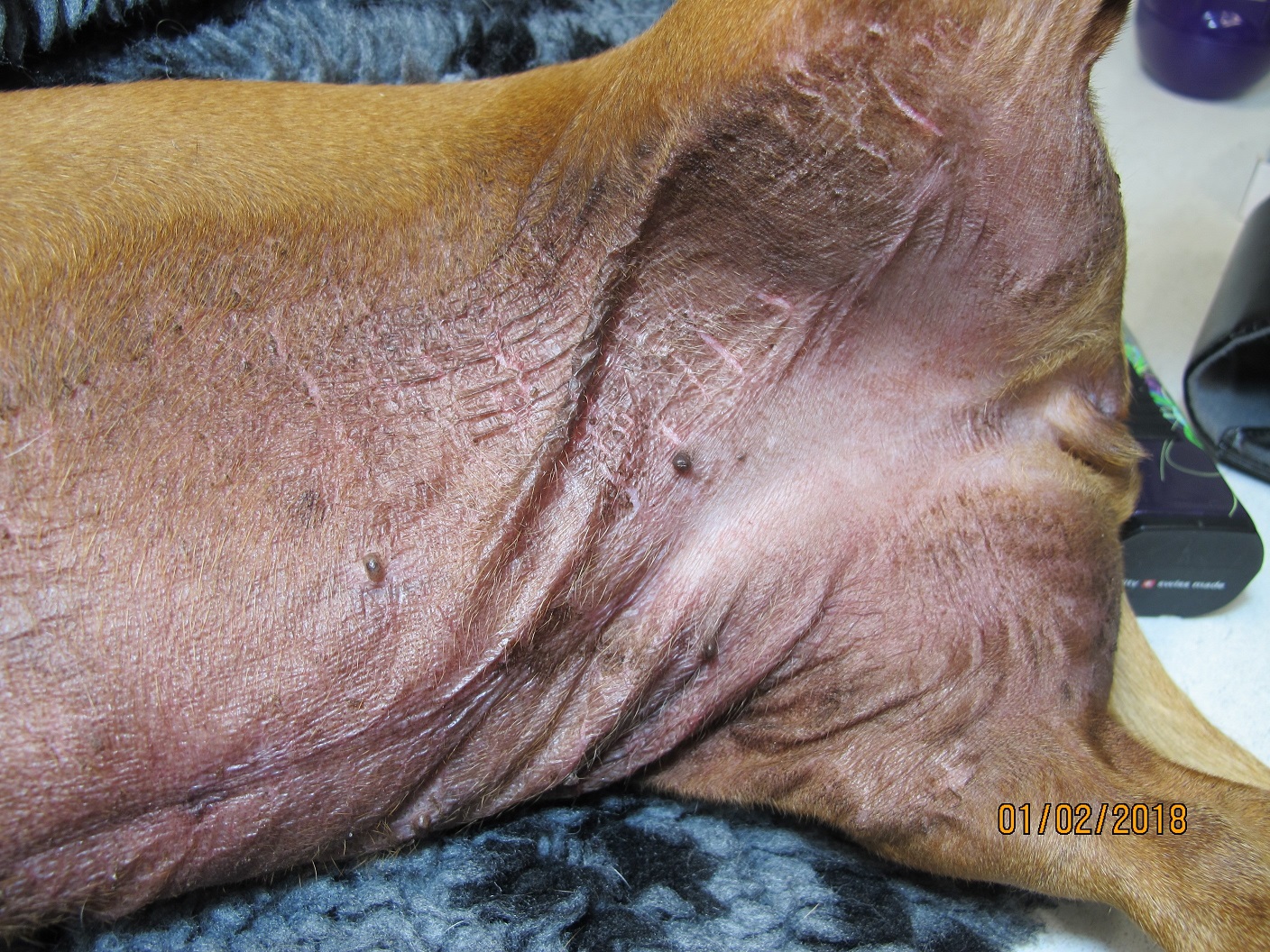Species: All.
Specimen: Microscope slide.
Container: Slide holder.
Collection protocol:
Skin scrapings are an often under-utilised diagnostic tool and can be very useful if correctly done (do not forget about those cases of localised demodicosis!).
Use a paraffin-coated scalpel and gently scrape the area whilst squeezing the skin to help extrude Demodex mites from hair follicles (hairs may need to be plucked to find mites in some cases of demodicosis). Sarcoptes live on the skin surface, but while very hard to find on skin scrapings, the finding of even one mite is significant. Cheyletiella mites, Chorioptes mites and lice should be found easily in coat brushings or Sellotape preparations of the coat. Otodectes may be found by scrapings or Sellotape preparations.
Don’t forget faecal egg count as part of the work up in suspected parasitic dermatitis cases. Hookworm penetration of the skin can cause inflammation and the only way to confirm this is by testing faeces for eggs.
General information about when this test is indicated: Dermatoses with prominent alopecia, pyoderma, follicular disease, crusting or scaling.

